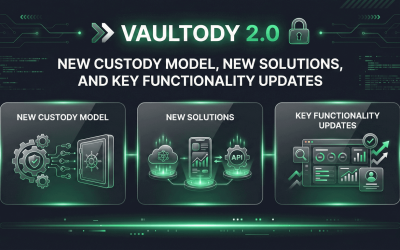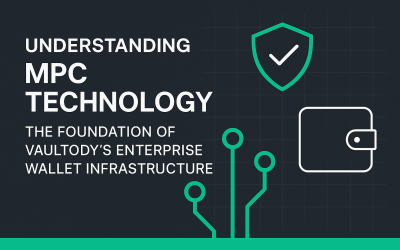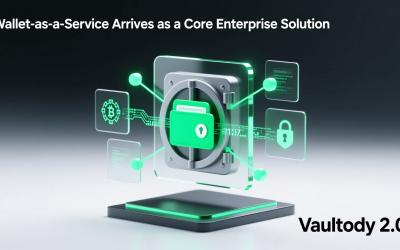In the heart of digital asset custody is the protection of private keys. They are used for authentication of the ownership, but also have different applications when it comes to storing, managing and transferring cryptocurrencies.
These characteristics of private keys mean they can represent a single point of failure and be vulnerable to attacks, as the one who controls the keys has access to the coins. The crypto industry has seen numerous examples of how weak and careless protection of private keys can lead to enormous losses. That’s why in recent years, advanced technologies like multi-party computation (MPC) have become the preferred solution to support the custody of digital assets.
In this article
Why Do We Need Multi-Party Computation (MPC)?
As the crypto market was growing and more businesses and institutions joined it, traditional ways of signing transactions were no longer a solution that provided maximum protection. This led to the emergence of more advanced and sophisticated technologies that offered an alternative to original single signature methods. The control, management and securing of private keys became the most important factor when considering different custody solutions.
Multi-party computation (MPC) is considered the industry-best technology for managing custody infrastructures. One of the things that make MPC so quantum-secure is the key sharding. It’s a keyless method that avoids the single point of failure by distributing key shards (instead of a single key) between different parties. This means that there is no single private key and each party has a key shard, located on a different server.
The Differences of Single-sig and Multi-sig Wallets
A Single-sig wallet has only one signer with one private key. While this method is fast and easy to execute, it is also the least secure as it provides potential hackers with an easy access.
Wallets that use multi-sig require multiple signatures of two or more private keys to authorize a transaction. While multi-sig avoids the single point of failure, it still presents privacy issues as the multiple signatures take place “on-chain” at the same time, exposing the access structure.
Having more on-chain data means the cost of multi-sig transactions is higher and since you are reliant on the reaction time of the other key holders, the transaction times can also be slower.
Multi-sig also leaves more room for human error. If one of the private keys is lost or compromised, recovery can be a tedious and painstaking process.
MPC and the Threshold Signature Scheme (TSS)
The Threshold Signature Scheme (TSS) is a digital signature protocol used by MPC wallets to distribute key shares and authorize transactions.
Using TSS, a set of n parties can jointly compute a public key, each of them keeping a secret share of the private key, without any of them revealing its part to the others. The benefits are that there is no single private key and no party knows what the other ones hold, preserving privacy and removing the single point of failure.
In translation singing, the signature is distributed between multiple holders of key shards, so each of them can generate a valid signature, as long as the threshold is met.
From a technical perspective, the TSS method replaces the KeyGen algorithm and Sign algorithm with an interactive protocol that allocates the shares of private key and signing across multiple parties that create the signature.
It’s important to note that in TSS a particular threshold must be reached in order for a transaction to be authorized. The threshold is the number of active holders of key shards who are required to sign. The general structure of TSS is often referred to as “t of n”.
Benefits of MPC Custody Technology
Quantum-level security aside, multi-party computation provides businesses and institutions with multiple benefits from greater flexibility to improved efficiency, easier key management and cost savings.
Here’s how:
More Efficient and Lower Costs
MPC wallets offer a much more efficient key management system as they generate one signature instead of multiple. This keeps the blockchain data light, meaning smaller transaction size, faster transaction times, and lower transaction fees.
Easier Key Management Security
When securing wallet keys, the best practice is to change private keys at frequent intervals. With multi-sig, the process of changing or replacing the private key is highly complex. It involves an on-chain transaction to synchronize the key pair and the accounts, meaning additional transaction fees.
Refreshing key-shares with an MPC wallet is simple. You can easily generate a huge number of different distributed key share combinations that represent the same private key, without the need to change it.
Greater Flexibility for Business Operations
Because MPC is keyless, it is much easier to adjust the signature scheme to any internal organizational changes. For example, say you wish to invite new members to the signing group as your business grows. With MPC, you can easily extend the existing private key to new members without the need to reveal or change the key pair.
Vaultody MPC Custody Solution
If you are considering managing your assets with an MPC-based custody technology you are on the right path as this is the easiest way to provide a reliable wallet solution with the best defense against cybercriminals.
The Vaultody platform perfectly combines the security of a digital vault with the flexibility and scalability of custody technology infrastructure. Our MPC-wallet solution is also blockchain agnostic which means it is compatible with all major blockchains and can easily adapt to changes. You can operate and manage multiple cryptocurrencies and digital assets without any additional configurations.
In addition, we offer a variety of features and tools that make managing your digital assets seamless, without compromising the safety of your assets.
To find out more about how Vaultody can benefit your business, contact the team today.









 Copy link
Copy link